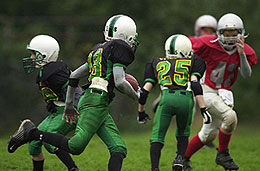|
Home | Rehabilitation | Sports
Therapy | Adolescent
Therapy | Lymphedema
Therapy | ATM2 | Staff | Facility | Patient
Forms | Testimonials | Contact
Us | Golf
|
| 311 North Street | White Plains,
NY 10605 | Tel. 914.428.2033 | 914.493.8375 | Fax. 914.428.2055 |
| Snow Skiing and Snowboarding—The
extremely popular sport of snowboarding carries many specific risks, such
as wrist, shoulder and ankle injuries, as well as spinal trauma. Most spinal
injuries are caused by compression and half the injured snowboarders had
damage to the spinal cord. Sprains account for over half the injuries reported,
with the lead foot being 3 times more vulnerable. Snowboarder’s ankle,
lateral twisting being the cause from high impact falls that people often
mistake for simple ankle sprain. Snow Skiing and Snowboarding—The extremely popular sport of snowboarding carries many specific risks, such as wrist, shoulder and ankle injuries, as well as spinal trauma. Most spinal injuries are caused by compression and half the injured snowboarders had damage to the spinal cord. Sprains account for over half the injuries reported, with the lead foot being 3 times more vulnerable. Snowboarder’s ankle, lateral twisting being the cause from high impact falls that people often mistake for simple ankle sprain. Soccer—A contact sport, soccer runs the risk of lower extremity contusions or bruising. Soft-tissue contusions (bruises) are the most common soccer injuries. Fractures are relatively uncommon, with repetitive traction injuries more common in knee and foot. Overuse injuries, such as stress fractures, are often from over-training accounting for 30 percent of all soccer injuries ranging from mild tendonitis to stress fractures. Sever’s disease, another common area of pain in young players, (from age 7 and up) is a growth plate inflammation of the heel bone, often mimicking tendonitis. |
|||||
|
|||||
| like Spondylolisthesis; also
a frequent occurrence in gymnastics, with spinal problems and pain.
Upper
extremity demands on athletes cause many injuries and strains. Stress
fractures
and shin splints
also are frequent occurrences, along with frequent wrist injuries
from overuse. Among girls' sports, gymnastics has one of the highest
injury rates, increasing with the level of competition.
Hockey—A plethora of injuries surround youth ice hockey, from neck strain, burners and stingers to knee and ACL, meniscal tears, to mechanical and neurological low-back pains. Skating strengthens the quadriceps, hamstrings, gluteus muscles, and calves, and greatly improves balance and coordination. Overuse injuries cannot be underestimated or their treatments overlooked. In-Line Skating—(Rollerblading) 60 percent of all rollerblading injuries are from children ages 10-14 years old. Forty percent of all in-line skating injuries occur in the wrist area or lower forearm, followed by knee, face and elbow. Falling on outstretched hands can cause severe wrist pain or fractures. Overuse injuries can lead to tenosynovitis, an inflammation of the lining of the sheath that surrounds a tendon, seen in wrists, hands and feet. Skateboarding—Skateboarding styles have become many dangerous with 10-ft high ramps and city cruising with complex stunts and tricks. According to the US Consumer Product Safety Commission, skateboards send an estimated 32,000 people to hospital emergency rooms for treatment of injuries each year. The most common injury from a skateboard crash is a fracture, although some skateboard falls or collisions with motor vehicles can be fatal. Most skateboard crashes occur because of irregular riding surfaces. Inexperienced skateboarders make-up one-third of all skateboarding injuries. Most commonly, they are injuries to the ankle followed by face, wrist and elbow. Risk severity can be greatly lessened with the use of protective gear. |
||||
|
||||
|
||||

